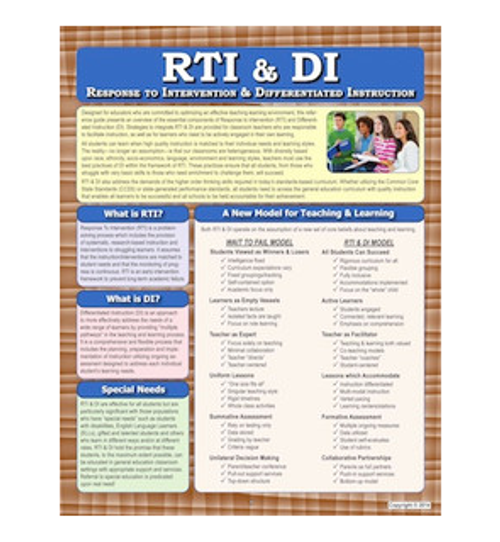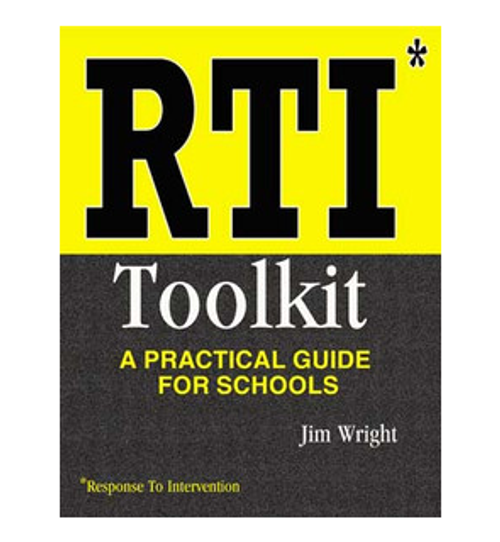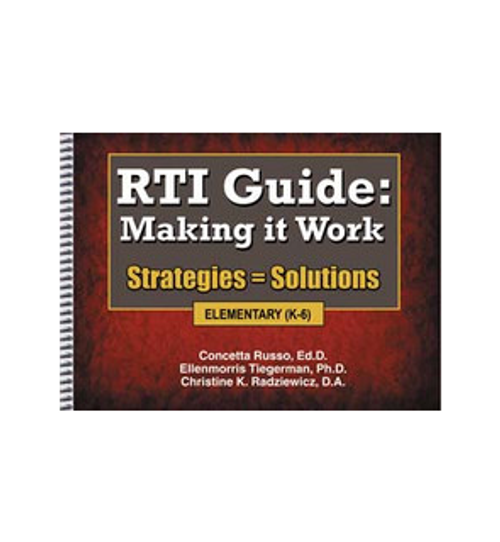Product Overview
To ensure that all students are receiving high quality instruction and meeting achievement benchmarks as required by federal law, all teachers should be familiar with the three-tiered model of Response To Intervention (RTI). This newly revised, six-page (tri-fold) laminated guide by Dr. Joseph Casbarro offers quick access to the essentials of RTI.
Using simple and clear language, RTI: Response To Intervention: Classroom Reference Guide identifies key features of RTI and describes how teachers, paraprofessionals and other educators can use RTI to
- Assess proficiency levels for all students and identify students who are at risk of falling behind state standards and/or grade level standards
- Identify students with learning disabilities (LD) as per the of the 2004 reauthorization of the Individuals with Disabilities Education Act (IDEA)
- Design high-quality instruction that is differentiated to be accessible to diverse learners in accordance with the framework of Universal Design for Learning (UDL)
- Engage parents in their child’s learning
- Provide targeted academic interventions and/or behavioral interventions for struggling students within the general education environment
- Monitor student progress to ensure that students are responding to instruction and/or interventions and are making continuous progress
- Collect data to meet the accountability requirements of NCLB
- Foster communication among school professionals (teachers, school administrators, guidance counselors, school psychologists, paraprofessionals/paraeducators, etc.) by establishing multi-disciplinary RTI teams
The guide includes lists of key terms, critical skills, types of student assessments, and additional RTI resources to help educators get the most out of Response To Intervention.







